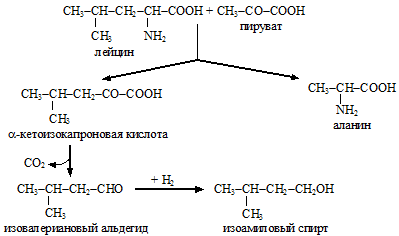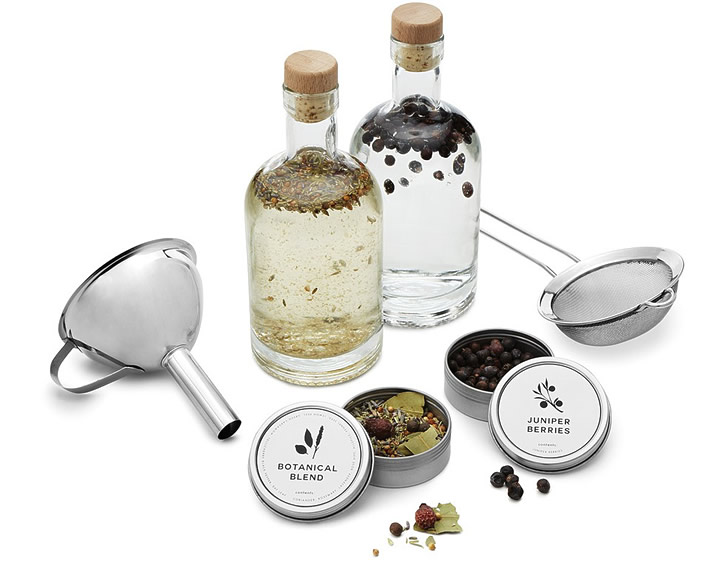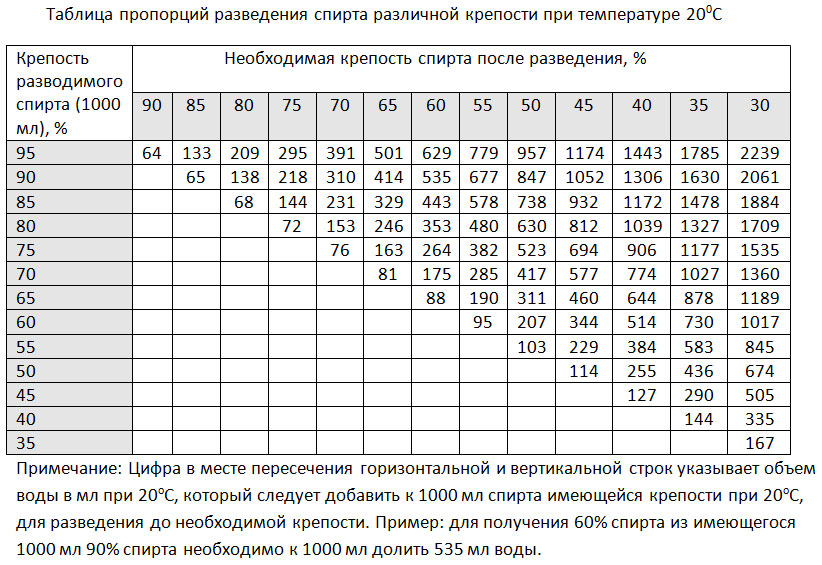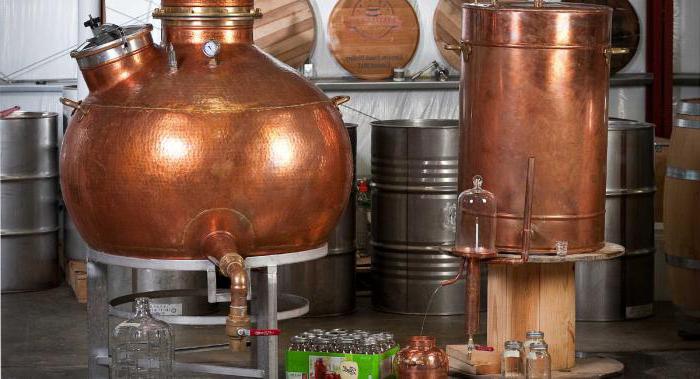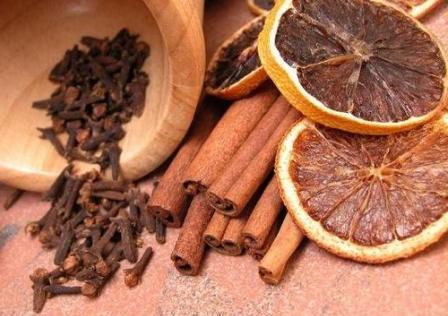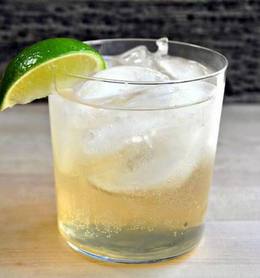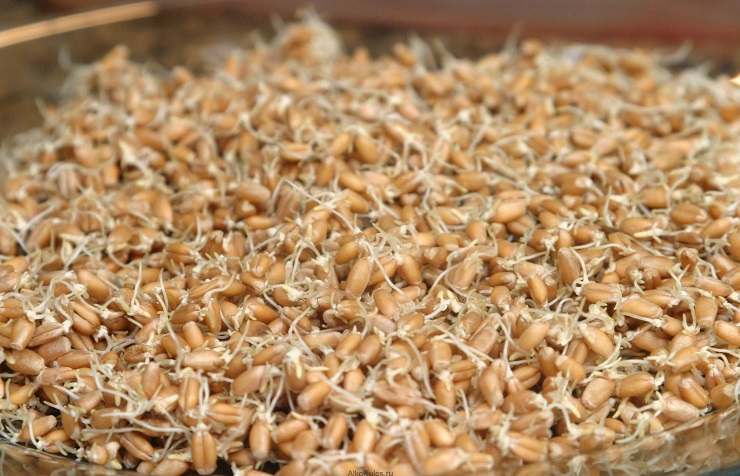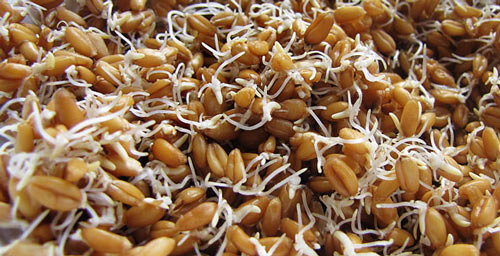How to dilute alcohol without a health risk. How to dilute alcohol to get vodka for drinking
Although there is a large assortment of alcoholic beverages on store shelves, some people prefer to make strong drinks at home. For some, this is a way to save money, but someone is just a lover of homemade alcohol.
One of the most popular alcohol-containing drinks is vodka. It would seem that it’s difficult to make vodka - you just need to dilute the alcohol with water in a certain proportion, and the vodka is ready. But not everything is as simple as it seems at first glance. To get high-quality vodka, you must observe some prescription nuances.
Navigation
What alcohol is best used to make vodka?
The best option for these purposes is to use highly purified drinking ethyl alcohol. Extra, Luxis just as good and medical. All of them vary slightly in strength, but the main difference between them is in the form of grain used for their production.
Someone may say why alcohol should be diluted, because you can already drink it. Well, firstly, an untrained person can easily burn his larynx, and secondly, the next day there will most likely be such a hangover which you can’t even wish for the enemy. So alcohol must be diluted and this should be done wisely.
What water to dilute alcohol?
For the preparation of homemade vodka, it is worth taking care of water for diluting alcohol. Ordinary tap or mineral water in this case is not suitable, it is not an option to use boiled water. Water should not contain any impurities or odors. Most it is preferable to use distilled or melt water, the process of filtration and softening.
Basic rules for making vodka
Compliance with the basic nuances and proportions will allow you to get a truly high-quality product:
- When diluted alcohol pours into water, and not vice versa.
- The classic version of vodka, from Dmitry Ivanovich Mendeleev (40 degrees), consists of two parts of alcohol and three parts of water. It turns out that for 200 grams of 96 percent alcohol, you need 300 grams of purified water.
- After combining alcohol and water, the resulting mixture is required shake well for mixing (naturally the container should be tightly closed). Then freshly prepared strong drink should be cooled.
- Preferably vodka, keep in the fridge some time (from day to week).
- Now you can try the resulting product. It may seem to someone that homemade vodka is no different from store vodka. Well then, you can try experimenting with the components.
The table shows the ratio of alcohol to water. We select the column with the degrees that you want to get and go down to the line with the alcohol strength. As a result, we get the required amount water in ml.
Recipe for alcohol vodka with sugar or glucose
The preparation of such an alcohol-containing drink will require a little more time and additional components.
Ingredients:
- 96 percent alcohol - 1 liter, 250 ml.
- Purified water - 2 l.
- 40 percent glucose solution - 50 ml.
In a three-liter glass bottle, alcohol is poured and glucose is added. Everything is neatly mixed. Purified water and the total volume of liquid are introduced into the resulting solution, brought to three liters. It is advisable to purify the resulting vodka using activated carbon, and then filter it. The final step will be the exposure of the drink in the refrigerator for two weeks.
You can believe that such vodka will be of excellent quality.
Vodka with honey and sugar
Vodka with sugar and honey has a delicious taste. For its preparation, a drink made according to the previous recipe is used.
Added to vodka honey to taste (in a ratio of not more than one in ten), sugar and citric acid (one teaspoon). After preparation, the drink should be aged. not less than three days in a refrigerator. Thanks to such additives, vodka will lose its alcohol taste and it will be easy and pleasant to drink it.
Vodka with the scent of orange or lemon
The technology for preparing such vodka is practically no different from previous recipes. The only thing you need to add to it lemon or orange skins and insist for about two weeks. You can also use other additives, for example, pine nuts, birch buds, etc. And you can make vodka with cranberry or citrus juice.
If you want to relieve a hangover, then you can add, in a strong drink, a small pinch of ascorbic acid.
As you can see, preparing real homemade vodka is not at all difficult, you just need to make a little effort and you will enjoy the alcohol-containing drink made by yourself.
Watch an educational video about making good quality homemade vodka!
Hello friends! In today's article we will talk about how to dilute alcohol with water at home. And not only to 40 degrees, but to any necessary fortress. I will tell you how to choose the right proportions and which water to choose. Also show how to make vodka. At first glance, everything is simple, but if you do not follow the mixing technology, you can get a cloudy, ugly liquid.
The idea of \u200b\u200bwriting this article has ripened for a long time. After all, I constantly write in my recipes that instead of vodka, you can use diluted alcohol, but not everyone knows how to dilute it, for example, up to 70 degrees. If you are a lucky person who has access to quality alcohol, then this article is for you. By the way, where do you get it? Tell us in the comments.
What should be alcohol
About what alcohols are described in separate article. Here we will not focus on this. I’ll just say that it should be naturally drinkable, of high quality and from trusted sources. It is also completely transparent and free from odors.
What water to use
The quality of the water used is no less important than the quality of the alcohol. Well, bent. Let's say a little less, but also very, very important. I think it is unnecessary to say that the water should be potable, clean and transparent, so let's move on to the less obvious things.
The main indicator of water for us is rigidity. Hardness is the amount of calcium (Ca) and magnesium (Mg) in water. It is measured in mEq / L. For dilution, it is necessary to use water with the lowest hardness, in other words soft water. Otherwise, the solution becomes cloudy, and even loses its taste.
So what should be the stiffness? According to the publication “Technology of alcohol and alcohol production” (M. “Food Industry”, 1973), water with hardness less than 1 mEq / l for natural water and less than 0.36 mg eq / l for softened water. We will use natural water, so we focus on 1 mEq / L.
How do you know how hard your water is, you ask? Now I’ll tell you, but let's first consider the options for what kind of water we can use.
Tap water
The worst option. This stiffness can reach 7 mEq / L. In addition, it contains bleach, which has its own pronounced smell. I do not recommend using such water, but if you still decide, then it is necessary to make some manipulations on it.
To begin, let the water stand for 3-4 hours to evaporate bleach. Then boil the water and let it cool. After boiling, pass through a household water filter jug. Now there are a lot of them on sale and they cope well with water treatment. After these procedures, the water is ready for use.
Spring water
Most sites on the Internet recommend this kind of water, but I would not be so categorical. It's not so simple. As a rule, spring water is very tasty, but its composition and hardness cannot be determined without special analysis. In addition, its indicators can vary greatly from season to season, heavy rain or drought.
Therefore, I can not recommend such water. If you have a spring or a well nearby, you can try using this water to prepare a small amount of the mixture and see what happens. If it does not cloud and its taste suits you, then the water from this spring is suitable for use.
Purchased Bottled Water
This, in my opinion, is the best of the options. The chemical composition and hardness are written on the purchased bottle, so we can only choose the water that is suitable for our purposes.
This, as I have already said, is water with a hardness of 1 mEq / l and lower. Such a sale is complete. I even saw water with a hardness of 0.05 mEq / L. It happens that the bottle does not indicate the total hardness. Then you should focus on the content of Ca and Mg. It is desirable that calcium be less than 10 mg / l, and magnesium is less than 8 mg / l. At least my water has such indicators.
Distilled water
It would seem that it can be better purified from all impurities of water to dilute alcohol? Such water will definitely not cloud. But here it is not so simple. Everything will depend on what you are going to use the resulting mixture for.
If for the further preparation of any tincture, for example Pepper or Cedar, the taste of which is determined primarily by the ingredients included in it, then distilled water is perfect. After all, she has no taste.
For the same reason, it is not well suited for the preparation of vodka, the taste of which largely depends on the taste of the water. Vodka prepared with distilled water is significantly inferior in taste to vodka in spring or bottled water.
To summarize: for dilution, use soft bottled water with a hardness of 1 mEq / L or lower.
Mixing ratio
When mixing alcohol with water, the volume of the resulting solution decreases. That is, when 1 liter of alcohol is added to 1 liter of alcohol at the outlet, we will not get 2 liters of liquid. The volume will be slightly less. This effect is called contraction and significantly complicates our calculations.
For the right choice of proportions, you must use a special table - the Fertman table. It indicates how many ml of water must be added to 1000 ml of alcohol in order to obtain a solution of the desired concentration.
I bring it below (click on the image to enlarge).

For example, to dilute 90% alcohol to 60%, add 535 ml of water to 1000 ml of alcohol.
It is worth noting that all these proportions are true at a temperature of mixed liquids of 20 ºС. If you measure the concentration of alcohol with an alcohol meter, you should know that when the temperature changes, its readings change. A deviation of 5 degrees in temperature results in a deviation of about 1 degree in alcohol. Here is a tablet for 96% alcohol.

You probably noticed that in the Fertman table there is data only on alcohol with a strength of 95% and below. But what if you have it stronger?
In such cases, you can use the formula below. She calculates how much the mixture should have after dilution.
Formula
X \u003d S / K * V (ml),
X is the final volume of diluted liquid (ml)
For example, we need to dilute 500 ml of 96% alcohol to a strength of 40%. We consider: X \u003d 96/40 * 500 \u003d 1200 ml. It turns out that we need to add water to 500 ml of alcohol until its volume increases to 1200 ml.
Complicated? Then there is such an option. This is a fairly rough estimate, but is suitable for home conditions.
M \u003d SV / K-V (ml),
M is the amount of water required for dilution (ml)
S - initial alcohol strength (%)
K is the required strength of the solution (%)
V is the initial volume of alcohol (ml)
Example: Again we dilute 500 ml of alcohol 96% to a strength of 40%. M \u003d 96 * 500 / 40-500 \u003d 700 ml. It turns out that in 500 ml of alcohol you need to add 700 ml of water. But the final volume of liquid will be less than 1200 ml. Remember why? That's right - contraction.
Mixing technology
Mixing alcohol and water is also not so simple. In various literature, and on many sites and forums they write that it is correct to pour alcohol into water. Say, you need to pour a heavier liquid (water density 1g / ml) into a lighter one (alcohol density 0.8 g / l), so they mix faster and the chemical reaction passes correctly.
But at the same time, I heard more than once that alcohol is poured into distilleries like alcohol into water, and vice versa. And some literature also cites technology by which water is added to alcohol. I give an example:
In the book "Technological instructions for alcoholic beverage production", 1971. on page 65 it says:
“The calculated amount of alcohol, then water, is poured into the prepared sorting vat through a measuring device”
In the reference book “Recipes for alcoholic beverages”, 1981 edition, on page 9 about the preparation of vodka the following is indicated:
“Water is added to the blending and the volume of the blending tank specified by the measuring glass is adjusted”
From personal experience I’ll say that I mixed this way and that, I didn’t notice any difference. The main thing to adhere to the following rules:
- Alcohol and water must be cooled before mixing. Alcohol can be put in the freezer, and water in the refrigerator.
- You can pour alcohol into water, and vice versa, the main thing is to pour in as quickly as possible and immediately mix well.
Alcohol diluted with water is called sorting. Just prepared sorting is not suitable for use. She needs some time to complete all the ongoing chemical reactions. Therefore, before using it, you need to defend it for at least a couple of days, and preferably a week. Close the bottle tightly and place in the refrigerator.
How to make vodka from alcohol
As I said above - a mixture of alcohol with water is not vodka, but only a semi-finished product called sorting. But sorting gets the usual taste of vodka only after cleaning it with charcoal. During carbohydrate, the mixture is purified from harmful impurities and redox reactions, after which the sorting turns into vodka.
For cleaning, you can use coal, sold in specialized stores for winemakers, activated carbon from a pharmacy, or a household filter jug \u200b\u200bfor water purification, which is sold in supermarkets.

The proportions per 1 liter of sorting are approximately the following - 1 tablespoon of charcoal from a moonshine shop, or 30 tablets of activated charcoal from a pharmacy, or double filtration through a jug. Sort should be 42%, because after carbohydrate 2 degrees will be lost.
After filtering, to soften the taste, add sugar (1 tsp per 1 l), or glucose (20 ml of a 40% solution per 1 l) or fructose to vodka. Slaked vinegar, glycerin, etc. are also sometimes added.
Today I do not give a detailed technological process for the preparation of vodka from alcohol, as this is a topic for a separate article. I will write it very soon. Sign up for updates and she will come to your mail.
And I, perhaps, have everything for today. Make the right drinks and be happy.
Until we meet again. Dorofeev Pavel.
Recipes for making vodka in a cold way are simple, but a quality finished product will be subject to the availability of good ingredients and accurate proportions. Fans of strong drinks of their own making like to dilute alcohol with water to make vodka. This is the most common drink in the world, and foreigners consider it a Russian attribute. Therefore, who, if not Russians, needs to know how to make vodka at home in high quality, so that it smells good, drinks easily and warms the soul.
If you make vodka yourself, you can be sure that there are no harmful additives in it.
The main principle for making homemade alcohol is mixing alcohol with water in the required proportions. The process is simple, but requires accuracy in the calculations. It is difficult to predict in advance what kind of alcohol will be purchased, and in order not to calculate each time, it is better to stock up with recommendations for different options. Or at the last moment you will have to look for a table with proportions and select random products to soften the taste.
Ingredient preparation
You need to prepare good components, because only in this way you get a quality product. You can argue for a long time which alcohol is better - medical, extra or highly purified. But the producers of domestic alcohol have little choice, most often purchased or otherwise extracted medical alcohol. Therefore, you need to use what you have and try to bring the final product to perfection. The main thing is to know exactly the degree of available raw materials, because the proportions of dilution depend on this.

Need to stock up:
- alcohol
- spring water;
- alcohol meter;
- measuring glass;
- sugar
- citric acid;
- natural additives to soften the drink.
It is easy to dilute alcohol for consumption, it is more difficult to find good ingredients. It should be borne in mind that the taste and properties of the resulting alcohol will depend not only on the quality of the alcohol, but also on the purity and mineral composition of the water.
Water preparation
The softer the water, which always has more vodka than alcohol, the softer the finished drink will be. Spring is considered the best, and tap is not suitable because of the large amount of impurities. Therefore, knowing how to properly dilute alcohol with water is not enough. You still need to prepare the liquid, while just boiling or distilling the tap will not be enough.

Thermal preparation “kills” water, an alcoholic drink based on it will have a sharp taste, so it should be “live” from natural sources. If it is not possible to dilute alcohol with water from the spring, it is permissible to use tap water, passed through the filter and frozen. When freezing, you should wait until approximately ¾ of the original volume turns into ice, pour out excess, thaw the ice and use this liquid for dilution.
Water Dilution Calculator
For homemade alcohol to have the desired degree, you should know in what proportions it is bred. Without this, it rarely turns out to get the vodka of the desired strength. Therefore, diluting alcohol, you need to use a special calculator that helps to make the correct calculation even to a person who is not able to determine percentages, correlate them with degrees and operate with fractions.
With such an assistant, knowing the strength of the available alcohol, one can easily calculate how much liquid should be stored before the dilution procedure begins.
Preparation of pure vodka with a strength of 40 degrees without additives
Alcohol strength is a mysterious category, because in the range of 40-48% vol. the drinker for some reason does not feel the difference. Based on this information, it is not practical to make vodka stronger than 40% vol. So as not to spend excess alcohol. After carelessly diluted strong alcohol in the mouth there is a feeling of dryness and an unpleasant aftertaste, so I want the alcohol to not only correspond to the desired degree, but also to drink easily, without requiring an immediate snack or drink.
Knowing how to dilute alcohol correctly, you can make high-quality alcohol in the cold way without even leaving home. The only condition is that the stock should have good feedstock and water that is close in quality to the spring. And then - a matter of technology. You need to calculate the proportions and mix the ingredients correctly.
There is a common method of mixing alcohol with water up to 40 degrees: 1 liter of 96% feed is added to 1.4 liters of liquid, resulting in 40-degree vodka. With a different strength of the feedstock, you will have to recalculate the proportions or use ready-made data.
The table below shows the different volumes of spring water that must be mixed with 1 liter of alcohol to make an alcoholic beverage with a strength of 40% vol .:
So that the alcohol does not get cloudy when mixing, it must be poured into chilled water. If you pour in the opposite and at the same time take warm water, chemical compounds are formed that fix the taste and smell characteristic of alcohol in the resulting drink.
- The volume of the container should be chosen in such a way that the resulting drink fills it to the very neck.
- The more oxygen remains in the tank, the longer the oxidation reaction will take and the top layer will turn into acetic acid.
- The container is placed in a dark place with a temperature above + 4 ° C, and there it should be at least 2 days, but the optimal exposure time to the end of all chemical reactions is 7 days.
How to dilute a liter of 96 alcohol
To calculate how to dilute alcohol with water, it is necessary not only for the preparation of vodka. Not so strong alcohol may be required. It is recommended to find ready-made tables offering solutions for mixing and obtaining liquids of the required degree.

If the desired value does not fall into the proposed ready-made range, the calculation is carried out independently, using a special formula that helps to find out how much water needs to be added to 100 ml of 96% alcohol to get the composition of the desired degree:
water volume \u003d 9600 / TC - 96, where
TK - the required strength of the solution in degrees.
In order not to make calculations every time, the results can be calculated and collected in a table showing how much water needs to be added so that the diluted 96-degree alcohol acquires the desired concentration:
Ingredients to soften the taste
After the procedure of mixing alcohol and water was successful, it was time to add components that soften the taste of the liquid - a residual sensation in the mouth immediately after ingestion. Vodka gourmets rightly argue that vodkas vary in smell, taste and sensation during swallowing and immediately after.

To improve the taste, additives are used that interrupt the sharp sensations during drinking and give natural aromas. When using unfamiliar ingredients, it is recommended that you experiment with small volumes of alcohol. You can soften the taste of homemade vodka by slightly acidifying or sweetening it with glucose, sucrose, citric acid:
- Citric acid is used in its pure form (2 g per 1 liter of alcohol) or is replaced by the juice of a small lemon.
- Ascorbic acid is highly soluble in alcohol, so it is used to soften any alcoholic beverages. 3-5 g of ascorbic acid are added per 1 liter of alcoholic beverage.
- Glucose is added at the rate of 5 g of powder or 25 ml of a 40% solution per 1 liter of vodka.
- Sugar is used only well-refined, otherwise the drink may become cloudy. Powdered sugar will dissolve most quickly. Standard portion - 1 tbsp. l without a slide on 1 liter of 40-degree vodka. You should know that sugar in vodka is not sugar in tea, in vodka the sweetness is felt stronger. To tint the drink, part of the white sugar can be replaced with 1 tsp. burnt.
- Fructose is 2 times sweeter than sugar, so take 1 ½ tbsp for 1 liter of drink. l
- Honey is used liquid or previously melted in a water bath. The proportions are the same as for fructose - ½ tbsp. l per 1 liter of drink.
There is no consensus on the sequence of preparation of soft vodka. A number of sources recommend mixing alcohol and water first, then adding emollients. But there are also recommendations to first add emollient ingredients to the water, wait for dissolution, and only then increase the degree.
It's no secret that vodka is one of the most popular alcoholic beverages in the countries of the former Soviet Union. It is used in every possible way, and even doctors' warnings about the harmful properties of alcohol do not scare people in any way. This drink is added to cocktails, washed down with various liquids or even drunk in its pure form. There are many different ways how to dilute vodka, and this is done either to eliminate the unpleasant tart or bitter taste, or to lower the degree of liquid. Knowing how to dilute vodka correctly, you can prepare many alcoholic cocktails and surprise your friends.
How to make vodka with juice: alcoholic cocktails
The most pleasant taste can be obtained by mixing strong alcohol with juice. In this case, it is important to observe the proportions and choose only high-quality ingredients. There are many recipes for making vodka juice:
- Screwdriver. One of the most common options is to mix vodka with orange juice. In this case, the juice should be chilled with pulp. The proportions are 1 part alcohol and 2.5 parts juice. You can add ice and orange slices. The taste in this case will mask the presence of alcohol, so you should be careful in use.
- Bloody Mary. By mixing fairly simple ingredients, you will be surprised at the taste of the drink. It is enough to add tomato juice, alcohol, salt, pepper and lemon juice in one container. It’s not strange that this particular cocktail is considered classic.
- Cape Encoder. This cocktail is able to surprise with its aftertaste. You need to mix chilled alcohol, cranberry juice, a few pieces of ice and the fruits of cranberries themselves. A slightly sour and tart drink can perfectly quench your thirst.
- Apple. Oddly enough, but many believe that the combination of apple juice and vodka reminds them of a martini to taste. The main thing in this case is to avoid getting pulp into the cocktail.
- Salty dog. It would seem that the combination, for example, of grapefruit juice with vodka is quite ordinary, but if you add ordinary salt to it, surprise is guaranteed to you.
There are many more different variations on this subject. Only the most popular methods are presented here, but there is always room for new experiments.
How to make vodka with soda: cocktails with cola and tonic
Many people for a quick intoxication choose a combination of soda and alcohol. It is believed that there is no better option than how to breed vodka with cola. At the same time, certain proportions must be observed to make the taste more or less tolerable. Most importantly, chilled ingredients and the presence of ice. 1 part of alcohol accounts for 4 parts of cola. Ice is added as desired. If you do not want to make the taste less intense, you can refuse ice. But at the same time, cola and alcohol should be icy, and the container for the drink itself is also chilled.
There is a recipe for energy at home that will instantly give you energy. You need to mix coffee, alcohol, cola and ice. The effect is not long in coming. But do not abuse this drink, because, like any stimulating drink, it adversely affects the nervous system.
There is another popular option for drinking alcohol. Knowing how to dilute a tonic with vodka, you can surprise your friends with a new taste, although cooking takes a minimum of time. The proportions can be completely different, both 1 to 1 and 1 to 2.5. It all depends on your preference. Naturally, ice, lime juice and mint for decoration will not be superfluous. The main secret of this drink is in no case to shake it.
How to properly dilute vodka to 20 or 30 degrees to reduce the strength
Sometimes in order to reduce the strength of the finished alcoholic beverage and make it less intoxicating, you need to reduce the percentage of alcohol by a certain amount of liquid. It would seem that everything is quite simple: you just need to add liquids to alcohol - and you're done. But there are many nuances that play a very important role. Ordinary water is most suitable for this process, but it is also selected according to special criteria:
- it should not be tap water or distilled, as it mixes poorly with alcohol;
- you need to cool the water to 20 degrees or lower;
- hardness is best reduced to a minimum, which is why baby water is best suited, which can be purchased at a store or pharmacy;
- the less salts contained in the composition - the better.
Unfortunately, ordinary boiled water will not work either. It can spoil the entire drink, making it cloudy, bitter and tart. An important detail is the lack of color, smell and taste. Another important point - you can not add alcohol to the water, but only vice versa.
There is a special table that will help in how to properly dilute vodka to 30 degrees. You can also use a special formula or an online calculator. The formula itself is quite simple: (A / B) * C - C \u003d amount of water. The way to dilute vodka to 20 degrees is exactly the same.
But do not think that immediately after adding water, alcohol is ready and suitable for consumption. This is completely wrong. At least a week is worth the wait and let the drink stand. Before this, you need to prepare a container into which you will pour your almost ready alcohol. It should be clean and with a tight-fitting lid that needs to be closed as tightly as possible. At the same time, vodka should be poured to the very edges in order to avoid the oxidation of alcohol and the appearance of acetic acid. Be careful, it can significantly spoil the taste of your drink.
How to breed vodka with vinegar for medical purposes
Absolutely unbelievable, but vodka can bring considerable health benefits. Of course, to prescribe this alcohol for medicinal purposes, you should definitely consult a doctor for a consultation. If he gives the go-ahead, then you can take this drink not orally, but in the form of grindings.
In the autumn period, the body is especially vulnerable, therefore it is during this period that we are most often sick. But if you use immunostimulating agents and antibiotics every time, you can get a negative reaction of the body not only to the disease, but also to intensive treatment. Sometimes folk remedies help to cope with temperature and ailments. Naturally, they are used in mild cases of the disease, when aggressive treatment methods can be dispensed with.
At the moment, there are many different drugs that help bring down the temperature in a short period of time, but at the same time they themselves do not bear any benefit, but rather, on the contrary, with frequent use. That is why sometimes you can turn to folk methods. Such a wonderful tool is grinding, which was mentioned above. But at the same time, you should know how to dilute vodka with vinegar for medical purposes. A strict proportion is observed with the addition of one part of vinegar, vodka and water. A napkin is dipped into the resulting mixture, and with smooth movements you can rub the patient's body, gradually increasing the pace. After grinding, it is best to use a hair dryer to blow warm, but not hot air into the body. After a couple of minutes, the procedure should be repeated. After 2-3 approaches, you can see an improvement and decrease in body temperature.
Water must comply with GOST R 51355-99 and SanPiN 2.1.4.559-96 “Drinking water. Hygienic requirements for water quality of centralized drinking water supply systems. Quality control".
Natural drinking water with an initial hardness of up to 1 mol / m 3 for the preparation of vodka is used without additional softening, and with a hardness of more than 1 mol / m 3 it is softened to a hardness of not more than 0.2 mol / m 3 or a pH of 5.5 to 7 ,eight.
Water requirements in vodka production also require the content of individual components and a number of other indicators, such as hardness, alkalinity, oxidizability, pH, dry residue, and the mass concentration of individual ions.
The quality of vodka is largely determined by the physico-chemical properties of the water used in the technological process and, in particular, by the composition of mineral substances, on which the nutritional value, organoleptic qualities - transparency, taste and shelf life depend on it.
Current standards for the production of vodka allow the presence in the water of mineral inclusions, characterized by the indicator "dry residue", in an amount up to 500 mg / l. In fact, in natural water, the content of mineral salts, as a rule, does not exceed 400 ... 600 mg / l. However, as experience in the production of high-quality varieties of vodka shows, this value is too high. Therefore, producers of vodka are looking for either natural sources with soft and weakly mineralized water, or methods for artificially reducing salinity in the corrected water.
The main substances that characterize the salt composition of water are bicarbonates, sulfates, chlorides and silicon dioxide. Bicarbonates give vodka harsh, bitter shades that drown out the rest of the tone. Sulfates in small quantities give vodka a “dry”, harmonious flavor. Chlorides in high amounts give vodka a bitter aftertaste. The presence of silicon dioxide is fraught with the harmful effect of the formation of silicates, which in the finished product cause "opal", that is, loss of gloss and crystal.
An integral part of the technology of vodka production is the preparation of process water, which affects the conditions for the preparation of sorting, dissolution, homogenization and stability of ingredients, formulations, organoleptic characteristics, as well as the stability of products (formation of turbidity and precipitation) during storage.
The studies conducted by VNIIIPBT made it possible to develop recommendations on the salt composition and the ratio of process water parameters that ensure the stability of vodkas ().
Based on the research conducted at VNIIIPBT, the following conclusions can be drawn:
♦ the effect of dissolved substances and trace elements on the organoleptic of water cannot be transferred to vodka prepared on this water. Moreover, the process water used for the preparation of vodkas that have received the highest organoleptic scores, as a rule, has lower scores as drinking water;
♦ assessment of the influence of individual dissolved components can only be carried out in combination with composite trace elements and process water parameters;
♦ The main parameter determining the stability of vodka during storage is hardness. Therefore, the regulated parameters, the ionic and microelement composition of the process water are reduced in accordance with the most characteristic ranges of hardness values;
♦ regulation of the composition of process water allows you to optimize the combination of dissolved substances, within regulated tolerances, and thereby improves the quality of vodkas;
♦ regulated hardness, in combination with the corresponding alkalinity, pH, oxide; Recommendations on the salt composition of process water
shelf life, solids content, content of dissolved substances and trace elements, ensures the absence of precipitation, of course, with the appropriate chemical resistance of glassware and observing the technology of preparation and application of the ingredients of the formulation;
♦ optimization of organoleptic indicators is achieved by regulating the composition of process water within regulated tolerances. In this case, the specific ratio of dissolved substances and trace elements depends on the quality of the alcohol, the activity of the resource for the production of activated carbon, the ratio of the ingredients of the formulation and other technological factors;
♦ natural waters with hardness of up to 1.0 mol / m 3 and a dry residue of up to 250 mg / l can be used as process water without adjusting their composition.
Mineral substances dissolved in water have different effects on the organoleptic characteristics of vodkas.
Calcium determines the fullness of taste, calcium bicarbonate softens the taste of vodka and softens its hotness, however, its content is strictly regulated, because calcium carbonate is the main cause of sedimentation in vodka.
Sodium in chloride form gives the vodka an acid-salty taste, potassium at a concentration of more than 10 mg / l enhances the acid-salty taste. Potassium is usually present in small amounts in natural waters. At a concentration of more than 10 mg / l enhances the acid-salty taste of sodium chloride.
With an increased iron content (concentration of more than 0.02 mg / l), vodka acquires an unpleasant taste (“ink” aftertaste), and opacities visible in the eye form.
Manganese, like iron, negatively affects the taste of vodkas, which are already apparent at a concentration of 0.02 mg / L.
Copper compounds give vodka a coarse metallic taste, which appears at a concentration of 0.02 mg / L.
Carbonates at elevated concentrations give the product coarse, bitter shades that easily drown out the remaining tones, which greatly affects the taste of vodka.
Bicarbonates have a high buffering capacity, they are able to neutralize the acidic ingredients of the formulation, at concentrations higher than the prescribed ones they give rough, bitter shades that easily drown out the remaining tones, which greatly worsens the taste of the finished product.
Chlorides in moderate concentrations create soft “aftertaste” tones.
Sulfates at a concentration of more than Z5 ... 40 mg / l create a stable bitterness in the taste, which is often perceived as aldehyde, which is involved in the formation of gypsum sediments.
Silicon has a positive effect on the taste of vodkas, however, at an increased concentration and pH\u003e 7 it forms a precipitate of silicates.
Phosphates at pH\u003e 6.7 give vodka an acidic taste, and at pH\u003e 7.3 it gives an unpleasant soapy taste.
Nitrates can be both non-chemical in nature and the result of biodegradation processes. Concentrations above 7 mg / l indicate too high biological or chemical contamination of the water, which gives the vodka an unpleasant bitter-astringent taste. The nitrate content in the process water should not exceed 3 ... 4 mg / l. Nitrates are biodegradation products and an indicator of water contamination by coliform bacteria. Nitrates are strong toxins, so their concentration should not exceed 0.1 mg / L.
Manganese, nickel and cobalt also negatively affect the taste of vodkas, which appear at a concentration of 20 μg / L.
Aluminum in process water in the production of vodka is in the form of sulfate and hydrated aluminosilicates, at a concentration of more than 0.02 mg / l, it contributes to the formation of silicon-containing precipitates.
Microbiological seeding can cause amorphous opacities due to the denaturation of the protein of microflora cells in an alcohol-containing medium. Unpredictably, all organoleptic indicators of finished vodkas deteriorate. The total microbial number should not exceed 10 CFU / 1 cm 3 of water.
Transparency is a parameter to which increasing demands are made, especially for exported vodkas. It is determined by the optical density as a percentage of the standard of double-distilled water (l \u003d 364 nm and the thickness of the cuvette is not less than 95%).
Color (color) is determined by the presence of humic, gallic and fulvic acid compounds, hydrocarbon compounds in the water (formed as a result of the decay of plants and microorganisms). The presence of color in the process water is not permissible.
Taste and smell are determined both by natural compounds (humic and fulvic acids, the presence of hydroxides of iron, manganese, dissolved hydrogen sulfide), and artificial causes (the presence of dissolved oil products, chlorinated organics and other anthropogenic pollutants). In process water, the taste and smell should not exceed one point at 20 ° C.

